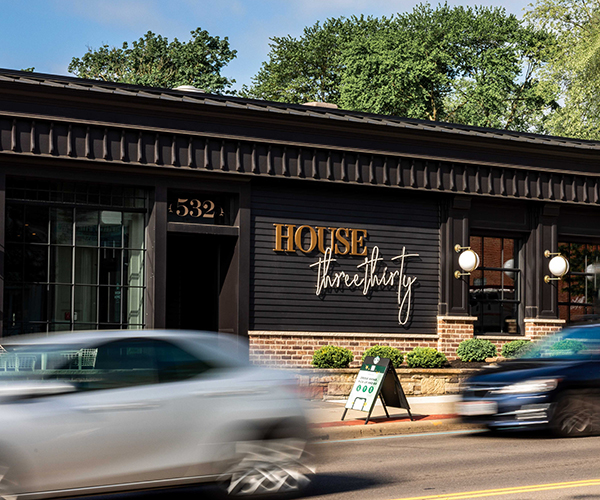|
Mitochondrial Disease:The Unknown Killer For decades, mitochondrial disease has been thought of as an "orphan" disorder. That is, it's so rare that it's hard to justify spending precious research dollars on it. Unfortunately, that rarity is a myth. One in every 1,000 kids will develop childhood cancer, while one in every 1,000 to 4,000 kids will develop mitochondrial disease, according to Barbara Bruck's physician, Dr. Bruce Cohen of The Cleveland Clinic Foundation. "In terms of frequency," he notes, "it's on par with childhood cancer." Even worse, half those children will die before they turn 10 — a statistic that is especially painful to Bruck and her husband, Allen Segal. "I look at my life as a blessing," says Segal, a cancer survivor. "For 48 years, I was able to live a fully normal life. I was able to walk and talk and digest food and breathe. I look at the children who have mitochondrial disease and they don't have that chance. They're not really living a life as we take for granted. These kids — many of them can't walk, many of them can't talk, many of them are on respirators and feeding tubes and half of them are going to die." Mitochondrial disease, which is notoriously difficult to diagnose, is a metabolic disorder that makes it increasingly difficult for the body to convert food into energy. The disease has an incredible spectrum of severity. Cohen had one patient die when only three days old, while others live a full life with only mild impairment. Typically, however, quality of life is severely diminished. And while "many more people" are affected by mitochondrial disease than AIDS in the United States, there is very little clinical research occurring, says Cohen, one of the country's few experts on the disorder. The research that is being done is very basic, generally on yeast and other lower life forms — hardly the sort of thing that inspires hope that a cure will be found anytime soon. The most common treatment currently available is a supplement called coenzyme Q10. At best, it only slows the progress of the disease. What will it take to find a cure or at least a more effective treatment? "My hope is that we obtain adequate funding so that we can do clinical trials, which are extremely expensive," Cohen says. And to get funding, you need awareness. "A lot of it has to do with the power of celebrities in the United States," observes Cohen. "Frankly, we listen to celebrities. When Michael J. Fox came down with Parkinson's, there was a huge public outcry and lots of research." — CM |
It may be hard to believe that this is a happy story, but it is.
For Barbara and Allen, both 52, happiness is not defined as longevity. Rather, it's the ability to contribute to society and to show their daughter, Dana, what it means to squeeze the potential out of life. And they are doing exactly that in a very unlikely way: by selling Barbara's meatless spaghetti sauce at 200 grocery stores in seven states. Proceeds from the sauce go toward research for Barbara's affliction: mitochondrial disease, a rare metabolic disorder that can, at its worst, cripple the body and ultimately kill its victims.
Physically, the sauce helped Barbara to follow the almost no-fat diet her doctors prescribed and improved her health. "The sauce gave my wife the ability to live," Allen says. "I was desperate. She was desperate. But I was even more desperate because I thought I was going to lose her."
The sauce also gave Barbara's life purpose. "I haven't been able to model for Dana in the way that I wanted to," she says. "I haven't been able to take her places. I haven't been able to attend school functions. This is something I can do.
"No matter how difficult things get, you still have a moral responsibility to give back, to make a contribution to the world," she continues. "There is no doubt in my mind that I have modeled that to her."
Then, when Allen got cancer, the sauce and its mission sustained him as well. "The baton was passed," he says. "I passed it to Barb and she passed it back to me to get to the finish line."
Barbara sits on the couch in her Lyndhurst home. She's rested all week, trying to store up enough energy to tell her story. Still, after the interview is over she takes to her bed, unable to move for several days. Her disease prevents her body from converting food into energy, causing cells to die and organs to break down.
"Life is an incredible struggle," she says. "I am, at best, struggling every day, lying here in an incredible amount of pain. I'm losing function every day, -- often can't zip up a coat."
Though Allen, free of cancer for nearly three years now, is tall and fit-looking, his battle has robbed him of much of his stamina, forcing him to cut back his hours as a rheumatologist to part time.
Their enthusiasm for the sauce, however, never falters.
Barbara has been ill for more than 30 years with a disease doctors could not diagnose. By the time her affliction was given a name, she was bedridden.
"It was dire," Allen remembers. "I'm not sure that she was giving up, but she had done so many things and experimented with so many vitamins and co-factors and suggestions that she didn't know where else to turn. She was convincing me that she was going to die. I believed it and I was frightened."
The only thing Barbara had not done was embrace the restricted diet her doctor had recommended, partially because she didn't believe it would help and partially because food was one of her few remaining comforts.
That's when — after trying countless low-fat recipes and finding them all wretched — Allen and Dana encouraged Barbara to come up with a healthy version of her popular meat spaghetti sauce. Too weak to do the cooking herself, she sat in a chair in the kitchen in the spring of 2000 and directed Allen to throw in a little more oregano or add some salt.
The result was a soy-based concoction with all the flavor and texture of Barbara's old meat-laden recipe.
The sauce gave Barbara the push she needed to adopt the strict diet doctors were advising — a move that boosted her health and her spirits. Allen and Dana made a big pot of the sauce at least once a week, eating it themselves and inviting family and friends over to try it. Everybody loved it.
Which is when the idea to sell the sauce arose. Despite the fact that neither of them knew a thing about production or marketing, the couple were driven by the idea of raising both money and awareness for mitochondrial disease.
Through a mutual friend, they arranged a dinner party to which Tom Heinen, one of the owners of the local supermarket chain, was invited. Heinen knew the purpose of the gathering was to taste a new product and agreed to do it solely as a favor to his friend. He'd never heard of mitochondrial disease.
"I actually thought the sauce was pretty darn good," Heinen remembers. When he found out that it was low-fat, he was even more impressed. Then, Barbara explained her condition and said she wanted to take the product to market to raise money for research.
Oh, one more dreamer, Heinen remembers thinking to himself. "I've dealt with dozens of these," Heinen says. None of them made it. And Barbara and Allen faced an even more challenging scenario. "The barrier to entry in a category like spaghetti sauce that's dominated by Ragu and all the other sauces is huge," Heinen explains. "I thought they'd become discouraged because it's such an uphill battle."
But that didn't happen. Barbara and Allen formed Tomato Face Foods (a name that Dana called Barbara one day when her medication had left her face a bit red and puffy). From finding a manufacturer to designing a label, the family struggled over every hurdle. When they called Heinen back, asking for a commitment to carry The Original Meatless "Meat" Sauce, he said yes. Though he admits to being taken with Barbara and Allen's perseverance, Heinen says he would not stock the sauce if it wasn't a great product. "Business is business," he notes.
In April 2002, Tomato Face Foods was given four shelf rows at all area Heinen's Fine Foods. So far, it's done well and is "maintaining its sales relative to other specialty sauces in the category," according to Heinen.
The sauce has since earned shelf space at 200 stores in seven states. One of its biggest successes was an agreement to be carried at Kroger grocery stores, which Heinen calls "amazing."
So far, the sauce has raised about $3,000, but the vision is much larger. Eventually, the family wants to see the sauce in 50,000 stores and would like to be able to make a donation of $1 million to mitochondrial research.
Allen was diagnosed with non-Hodgkin's lympho!a, a cancer of the immune system, late in 2000. He called his wife, telling her he was going to die. The lowest point followed several months later when, with almost no white blood cells left, Allen was hospitalized and in critical condition. Barbara was too sick to go to the hospital with him.
"A friend drove him there," she says softly. "I just collapsed on the floor. I really thought we were going to lose him and I was too sick to be with him."
Barbara's daughter, then 12 years old, cradled her mother and tried to comfort her. "Things can't get any worse," Dana said. "There's only one way for them to go."
The danger of losing both her mother and father has suffused Dana's childhood with fear, but her parents say it's also given her an intense appreciation for life. She constantly thanks her parents for the privilege of attending a good school — Laurel. And she is grateful for things many teen-agers would resent, such as the day this winter when her mother felt well enough to go to a movie with her. "She thanked me over and over again," Barbara says.
Dana has also learned to be aggressive, launching a campaign to have her parents' story told in a spotlight virtually guaranteed to skyrocket awareness of mitochondrial disease: "The Oprah Winfrey Show." To that end, she's written two letters and sent a jar of sauce to Winfrey and continues her lobbying efforts by having others, such as Tom Heinen, write letters as well.
"Everybody knows that until mitochondrial disease gains national attention, that nobody's going to do anything about it," Barbara explains. "We have a vehicle to bring attention to the plight of people that suffer from mitochondrial disease. We're bringing hope to people that someone is hearing their cries."
As for Barbara and Allen, their future remains uncertain. He is said to have a 60 to 65 percent chance of making it to 10 years cancer free. Barbara is feeling better than she used to, but knows that her disease is progressive. The goal is a "long and a better quality of life for both of us," Allen says. "But there are no guarantees."
There is only hope — and the knowledge that their work is creating hope for others.
"What's important is your ultimate happiness in knowing that you're contributing to society and to your family in a meaningful way," Allen says. "Barb and I share the task of showing our daughter, by example, how to live a meaningful life."



